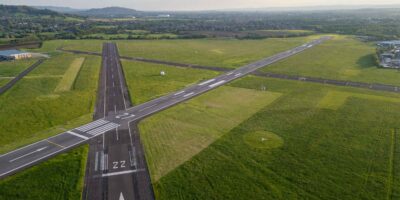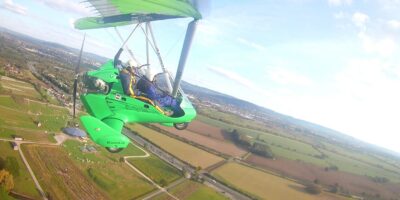Engine makers Rotax recently announced the end of two-stroke aircraft engine manufacture, saying this would leave none in production anywhere. It’s a claim that blithely neglects the likes of Messrs Hirth and Simonini, but you can see why Rotax are pulling out. In a world which wishes to become fully electrified as soon as possible, a two-stroke anything looks politically incorrect.
Rotax says the market now demands four-strokes, and will continue to make the 91-series (over 50,000 of which they say are in aviating service worldwide), and it’s just as well they will. Just imagine what the 75-plus makers of VLAs (that’s all I could find still in business) would do for motive power if the 912 hadn’t been invented.
“…a staggering 3,580hp from 41 litres and it was fantastically economical”
For those of us with longer memories… the Rotax 912’s ubiquity only harks back to the 1960s and 1970s and a time when just about everything that resembled a light aircraft featured a Lycoming or a Continental. There was a time when aeroplanes made here featured a Gipsy or Blackburn, but British piston engine makers have long given up in the face of economic reality, and despite Governmental intervention so have their French competitors.
On the heels of the Rotax announcement came news of the RED A03 engine’s successful test flights, and perhaps more important, news of sales. The A03 is a 500hp V12 four-stroke diesel, designed by a Russian and developed in Germany over nearly a decade, and which has now flown several hours in a Yak 18 four-seater – replacing the 350hp nine-cylinder Vedeneyev M14 radial – which to the Eastern bloc, seems to be what Lycoming and Continental are to the Americans. The surprising thing is perhaps that RED has found a market for a larger engine. It weighs 383 kilos, or a fair bit more than the original engine’s 215kg, but I’m guessing the big Yak could easily cope with that which was why they chose it. The news struck a chord with me. A few years back, I tried to develop a 250hp diesel conversion which remains still-born largely because I couldn’t find anything which needed the power and could handle the weight, but wasn’t certified.
Technical details are still a bit scant, but the A03 appears to be a twin-cam common rail four-stroke diesel, fully electronically managed with two of everything, including the facility to operate each bank of cylinders independently for greater redundancy. RED Aviation Gmbh has received Certification from the FAA, EASA, and both the Russian and New Zealand authorities, and has sold an engine to British Columbia-based seaplane operators Sealand, for installation in a Beaver floatplane. The characteristically pug-nosed 450hp Pratt and Whitney 985 radial installation has been replaced by a much longer schnozz but the practical benefits are much greater fuel economy for the intended role of pleasure flights, and of course a modern electronically managed engine. Impressive, as much for the fact that RED found the finance for nearly 10 years of development AND the amounts required by officialdom for certification, not to mention the staying power.
Less good news is the number of promising projects which haven’t made it. On the pyre we’ll find the Orenda V8 – a 600hp petrol engine (8.1 litre, 336 kg dry) which owed something to the aluminium big-block Chevrolets found in US muscle cars. It was intended as a lower-priced retrofit for the PT6 gas turbine in a Beech King Air and gained FAA Certification. And Engineered Propulsion Systems Graflight 8, a clean sheet 4.3 litre 450hp two-stroke diesel which weighed only a bit more than a 350hp Continental and successfully completed 25 hours of test flying in a Cirrus SR22 four-seater. A great pity is that, because it sounded like a good idea.
Diesels in aviation are still not commonplace, but if we dig the pyre slightly deeper, among the ashes of the 1930s and 1940s we’ll find the extraordinary Napier Nomads which are notable for their complexity as well as their size and definitely deserve a book. I’ll summarise… The Nomad 1 of 1945/46 was a 12 cylinder valveless sleeve-ported two-stroke diesel compound piston engine incorporating a gas turbine where one engine simultaneously fed the other with pressurized gases and each part drove a separate contra-rotating propeller. It was as complex as it sounds, not to mention huge. It measured 11ft by four, and weighed 1.5 tons, but it produced a staggering 3,580hp from 41 litres and it was fantastically economical. The consumption of 0.345lb of kerosene per hp per hour is still claimed to be unmatched in aviation.
The Nomad ran for over 1,000 hours, some of that on the nose of an Avro Lincoln bomber set up as a test bed, and could fly the aeroplane alone with the four Merlins shut down. The Nomad’s weight and complexity in the face of simpler and lighter gas turbines sealed its demise but I celebrate the effort. Maybe Rotax might consider a 120hp version. Oh, it’s a two stroke…
Working vintage aircraft and cars make Mark particularly happy.
[email protected]







